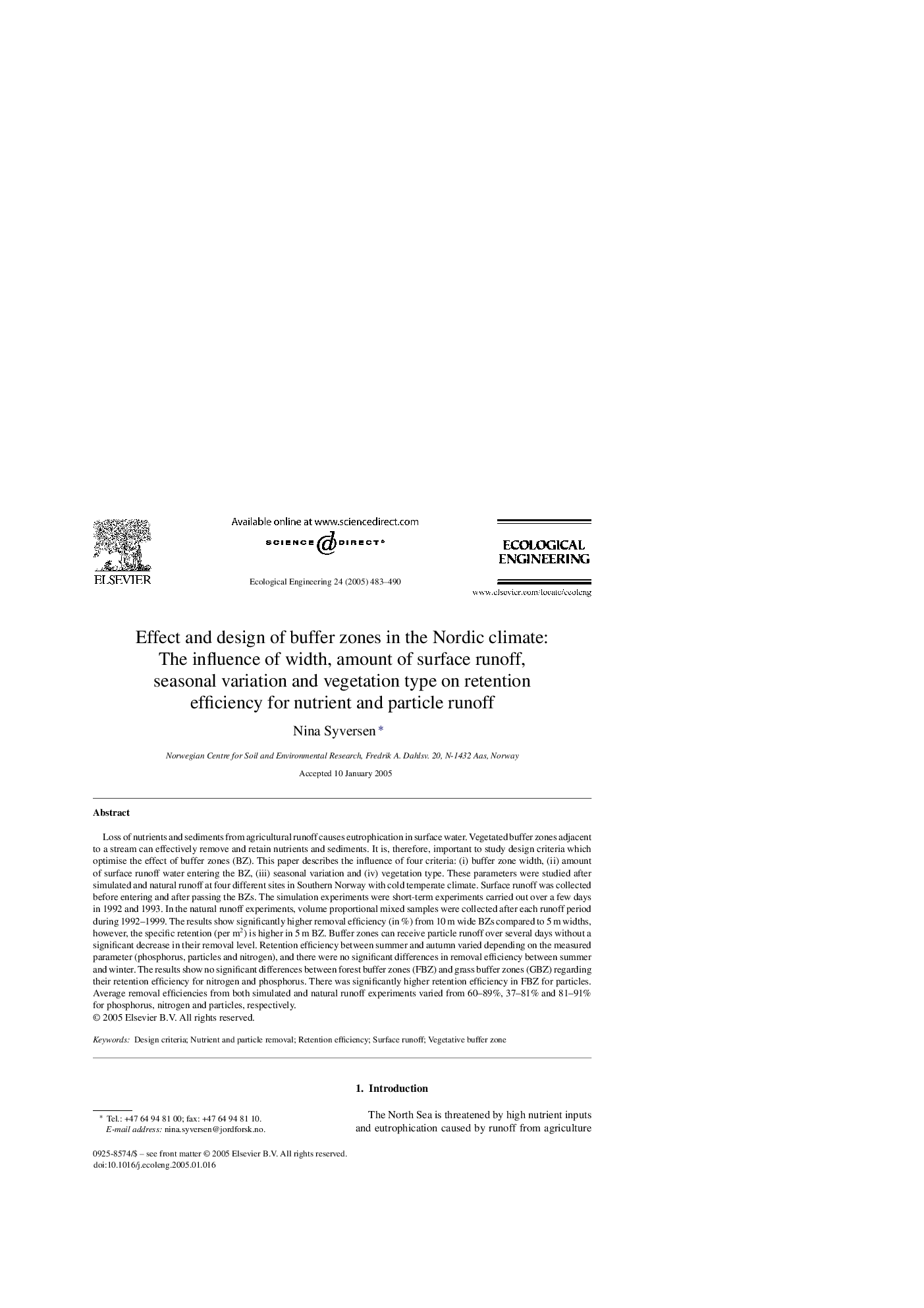| کد مقاله | کد نشریه | سال انتشار | مقاله انگلیسی | نسخه تمام متن |
|---|---|---|---|---|
| 9447535 | 1305244 | 2005 | 8 صفحه PDF | دانلود رایگان |
عنوان انگلیسی مقاله ISI
Effect and design of buffer zones in the Nordic climate: The influence of width, amount of surface runoff, seasonal variation and vegetation type on retention efficiency for nutrient and particle runoff
دانلود مقاله + سفارش ترجمه
دانلود مقاله ISI انگلیسی
رایگان برای ایرانیان
کلمات کلیدی
موضوعات مرتبط
علوم زیستی و بیوفناوری
علوم کشاورزی و بیولوژیک
بوم شناسی، تکامل، رفتار و سامانه شناسی
پیش نمایش صفحه اول مقاله

چکیده انگلیسی
Loss of nutrients and sediments from agricultural runoff causes eutrophication in surface water. Vegetated buffer zones adjacent to a stream can effectively remove and retain nutrients and sediments. It is, therefore, important to study design criteria which optimise the effect of buffer zones (BZ). This paper describes the influence of four criteria: (i) buffer zone width, (ii) amount of surface runoff water entering the BZ, (iii) seasonal variation and (iv) vegetation type. These parameters were studied after simulated and natural runoff at four different sites in Southern Norway with cold temperate climate. Surface runoff was collected before entering and after passing the BZs. The simulation experiments were short-term experiments carried out over a few days in 1992 and 1993. In the natural runoff experiments, volume proportional mixed samples were collected after each runoff period during 1992-1999. The results show significantly higher removal efficiency (in %) from 10Â m wide BZs compared to 5Â m widths, however, the specific retention (per m2) is higher in 5Â m BZ. Buffer zones can receive particle runoff over several days without a significant decrease in their removal level. Retention efficiency between summer and autumn varied depending on the measured parameter (phosphorus, particles and nitrogen), and there were no significant differences in removal efficiency between summer and winter. The results show no significant differences between forest buffer zones (FBZ) and grass buffer zones (GBZ) regarding their retention efficiency for nitrogen and phosphorus. There was significantly higher retention efficiency in FBZ for particles. Average removal efficiencies from both simulated and natural runoff experiments varied from 60-89%, 37-81% and 81-91% for phosphorus, nitrogen and particles, respectively.
ناشر
Database: Elsevier - ScienceDirect (ساینس دایرکت)
Journal: Ecological Engineering - Volume 24, Issue 5, 30 May 2005, Pages 483-490
Journal: Ecological Engineering - Volume 24, Issue 5, 30 May 2005, Pages 483-490
نویسندگان
Nina Syversen,